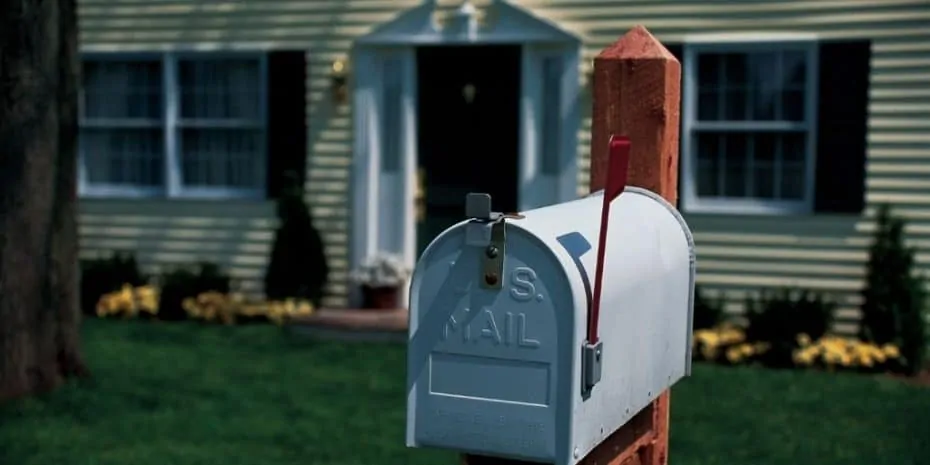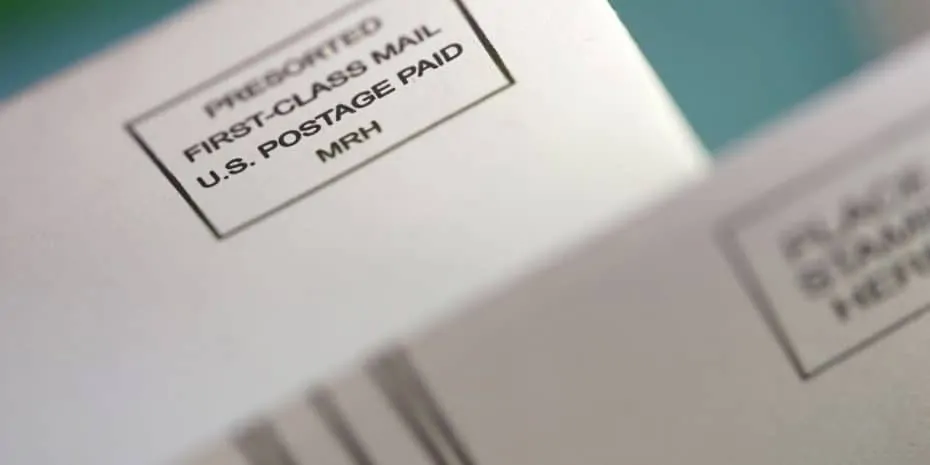
REtipster features products and services we find useful. If you buy something through the links below, we may receive a referral fee, which helps support our work. Learn more.
If you want to succeed in real estate, the number one priority is to find motivated sellers and lots of them.
If you can’t do this, then the rest of this process isn't even worth talking about because this whole game begins and ends with your ability to find sellers who will accept your low offers and play by your terms.
What's a “Motivated Seller” Anyway?
In my mind, a “motivated seller” is a property owner who is willing to do at least one of the following things:
- Sell their property for a very low price (I mean REALLY low… think somewhere in the neighborhood of 10% – 30% of market value).
- Sell their property with very flexible terms (i.e., sellers who will basically finance the property for you, require no money down, and charge 0% interest).
Obviously, these types of sellers will have to agree to a pretty ridiculous offer. They’ll have to sell their property almost entirely on your terms and in your interests. Things that, in theory, no sane person would ever be willing to do.
If you want to make your next real estate investment a “sure thing,” you need to be in a position where you have nothing to lose and everything to gain. On the other hand, the seller needs to be in a position where they are willing to lose everything and walk away from their property with little (if anything) to show for it.
I know it sounds crazy. Heck, it might even sound impossible… but I’m going to explain exactly how I find these sellers regularly and get them calling ME, asking me to buy their property for whatever price I feel like paying.
If you’re skeptical, I understand. I realize this may sound too good to be true. After all, who would ever agree to such outrageous terms like this? Are there really deals like this to be had out there? Are there actual property owners who will sell their property for next to nothing?
The answer is a resounding YES. Now let's talk about how you can find them!
How to Get the List
It all starts with your ability to find a targeted list of property owners who are highly motivated to sell.
We are NOT looking for just any list of property owners. We are looking for a very specific demographic of people who (statistically speaking) are much more likely to sell their property than the average property owner.
There are several different ways to go about getting these lists. Depending on what areas of the United States you're working in, some methods can work better than others.
Method 1: Working With the County
In most of the markets where I've worked, my preferred method is to get this list directly from the county.
Specifically, I'm looking for the county's delinquent tax list. Every county has this list, and it's an absolute GOLD MINE of information that can help you track down some of the most highly motivated sellers in a given area. For more information on how to get your hands on this list, I explain it in great detail in this blog post.
Working directly with the county has its pros and cons.
The biggest benefit is that the data is as fresh and as accurate as it will ever be because it's coming directly from the county's database in real-time. This is important because working with current and accurate data is CRUCIAL when doing a direct mail campaign. Without it, you could end up wasting a lot of time and money on mail that doesn't reach the right people, which can be detrimental to your results in every subsequent step in this process.
The downside is that many counties can be difficult to work with. Some of the lists these counties provide (assuming you can get them at all) can present some MAJOR hassles when sorting and organizing them. It's not impossible to get the job done, but some counties make this a cumbersome, time-consuming process.
Method 2: Working With a Data Service
Another way to get this list is to order your list from a real estate data service.
MANY different companies can provide these lists in a clean, workable format. Some are expensive; others are relatively cheap. Some are great at generating certain lists, others at lists for other purposes.
None of them are perfect in every way, but if you know exactly what types of property owners you're looking for, the data you need is probably out there somewhere.
I've put together a comprehensive comparison of several data services in this blog post, so check it out if you're unsure where to start.
These days, I use a service called The Land Portal.
The primary benefit of a service like this is that getting these lists is relatively inexpensive, and they're both great resources for property research.
Here's a quick overview of how The Land Portal works:
Keep in mind—all this information is of public record.
If you know exactly where to look and are willing to spend a considerable amount of time navigating the often poorly organized websites that most municipalities offer, you can likely find this basic information for free.
You don't technically “need” a service like The Land Portal, but it does offer some huge benefits, namely:
- It organizes everything into a consistent, reliable, easy-to-use format.
- It pulls in additional information on each property that is harder to find.
- It lets you get the information you want in seconds, not hours or days.
No matter what state or county you're in, and no matter how janky or inaccessible the information may be from the government, The Land Portal will make things much easier.
The downside to these kinds of data services is that some of the counties (particularly the more rural ones) may have outdated and/or incomplete databases. For this reason, I've found that even though most data services are far more convenient, they aren't always the best solution in every county. That said, where it does work, it can work wonders.
As you can imagine, many different people and companies use this data to create bulk mailings. If you've ever gotten junk mail before, chances are they found your name and information from this kind of public information database.
Why Direct Mail Works
Most direct mail campaigns are not very effective. Why? Because a lot of direct mail marketers don't do a great job at narrowing down their target audience. They send out mail to a WIDE range of people (most of whom don't need what they have to offer) and they send a very generic message that looks like junk mail. As a result, they waste an obscene amount of money.
When we send out mail, we are much smarter about who we're trying to reach.
The goal isn't to send out a massive volume of mail. The goal is to send our message to the right people. If we want to get a higher response rate (thus making our mail campaign more worthwhile), this will only happen by obtaining a quality list.
As mentioned in the video above, The Land Portal allows us to pick out specific types of properties and owners on a number of different levels. By doing so, we can put together a direct mail campaign that will get a MUCH better response rate than 1% because we're targeting the right kinds of people who need what we're offering them. On average, my response rates are usually in the 5-10% range (and even higher on occasion).
It is essential to have current information and the right recipients on your list. If you don't filter your list appropriately and/or you're working with outdated information, you'll end up wasting a lot of time and money.
RELATED: How I Find Motivated Sellers (and Get Them Calling Me). Step 2: Sorting the List
With this in mind, I like to target my lists based on a few key characteristics:
1. Property owners who live out-of-county (or out-of-state).
People who live out-of-state (and even out-of-county) tend to be much more disengaged from their investment properties. Many of these people had to move away unexpectedly, and for whatever reason, they just don't care about their property. It's an “out of sight, out of mind” situation. These people have a vested interest in liquidating as soon as possible because the property has become a drag on their finances.
2. Property owners who don't live at their property (absentee owners).
For obvious reasons, absentee owners are much more likely to part with an investment property than they are with their personal residence. Don't expect people to sell you the roof over their head for pennies on the dollar; it usually won't happen.
3. Property owners who have owned their property for ten years or longer.
On occasion, I like to sort my lists with this criteria because properties that have been owned for a longer period are much more likely to be owned free and clear. With these properties, the owner has more equity to play with, which gives them more freedom to sell their property at a HUGE discount.
4. Property owners who have delinquent taxes.
Many of these owners are at the end of their rope financially. They literally don't have the time or money to wait for a higher offer. If they don't sell the property to you, they will lose everything to tax foreclosure. Of course, you'll have to take care of the taxes once you buy it, but these delinquencies will often give you a lot of leverage to make a low-ball offer.
5. Properties that are in the right price range.
If you're not interested in buying a million-dollar property, then don't solicit people who own these properties. It's that simple. If you can screen the properties that are clearly out of your price range to begin with, then do it! You'll only be wasting postage if you mail to property owners that you never intend to purchase from.
As you can imagine, you can sort your lists using other philosophies and methods (and I encourage you to test out some of your own as you see fit), but these are the most common sorting methods that I've seen used throughout the industry.
Direct mail certainly isn't free, but when it's done right—it works. There is no better way that I know of to reach a targeted audience in such a short time. If you haven't tried direct mail yet, I urge you to give it a shot. You may be pleasantly surprised.
RELATED: How I Find Motivated Sellers (and Get Them Calling Me). Step 3: Sending the Mail
When Direct Mail Disappoints
From time to time, I've heard from investors who have tried this list-pulling method, and they haven't gotten a good response rate.
Unfortunately, this risk is inherent in any direct mail campaign, and there can be a lot of reasons why this happens. The success of a campaign depends on at least a few key factors:
Problem #1: The Source of Your List
It's important to understand that some counties do a very poor job of maintaining their public records, and an even worse job of making that data available for these third-party data services to pull from. I've found this usually happens in counties that are VERY rural and sparsely populated. This is probably because they don't have the tax revenue to keep a solid public records system.
When a county doesn't provide good data, the information available from your data service of choice (whether it's The Land Portal or some other service) won't be any better. When the data in our list isn't current or accurate, it often translates into a much lower response rate (because at the end of the day, no matter how well we filter our lists, our mail isn't reaching the right people).
Some data services will give you the option of seeing how current the data is in their database and luckily, The Land Portal has this capability.
Generally speaking, it's not a bad idea to do a test with every direct mail campaign, especially when you're trying to break into a new market. Try sending out a few hundred mail pieces in the new area you're trying to work in and see what kind of response rate you get from a smaller sample size BEFORE you start blasting out thousands of mailers.
If your response rate is terrible on the first few hundred mailers, you'll be able to determine if your strategy isn't performing adequately in this area. It's much better to diagnose the problem before you invest a fortune into a campaign that's bound to fail.
Problem #2: Your Filtering Criteria
Another problem could simply be the way you filter your list.
- Do you filter out the owner-occupied properties?
- How specific are you about the property types you're looking for?
- Have you selected the right market value range of the properties you're looking for?
- Are you eliminating all the duplicates on your list?
- Are you getting rid of the properties without mailable addresses?
- Have you specified the property sizes you're looking for?
There's an INFINITE number of ways to filter your list. The clearer you are about the types of properties you don't want to send mail to, the more legitimate, targeted responses you'll get from the people you actually want to do business with.
When you blast out mail to anybody and everybody, most of them won't be in a position where they need to sell now. This means they likely won't be willing to play by your terms, you won't end up doing business with them, and your marketing dollars will be wasted.
It all starts with getting hyper-specific about who you're trying to work with.
Problem #3: Your Message
Even if you've got the right information and you know how to use it, your campaign can still underperform if you aren't saying the right things to your recipients.
Whether you're sending out a postcard, a letter in an envelope, or some other creative type of mail, the words we use and the way we present our message (font, color, images, text size, etc) can have a surprisingly big impact on whether we get responses from the right people.
For example…
- If you're sending out postcards, is it the optimal color, size, type, etc?
- If you're sending out letters in an envelope, does the envelope look like junk mail or does it look like a personal letter that people will open?
- What are you saying in your postcard/letter? Is it short enough that people will read it, and compelling enough that the recipient will respond?
- Are there any images or “doodles” included in the letter to make it look unique, eye-catching, and personal?
- How many different ways can people respond to you? Are you forcing them all through a website, or are you giving them a multitude of options (phone, email, fax, website, QR code, etc)?
- When people do respond, what will they see and hear from your voicemail greeting, call center, or website? How easy are you making it for them?
- If you're routing them to a voicemail system, what does your voicemail message say?
I've put together my own templates that have worked well for me, but even mine aren't perfect.
It can help a lot to take what has been proven to work and put your own creative spin on it, so it maintains the elements that work, but also looks unique and stands out from other direct mail marketers who may be sending similar types of mail to the same people.
If you're experiencing a consistently BAD response rate, it's probably because one or more of the things listed above isn't dialed in quite right.
Getting a Good Response Rate
Sometimes I'll hear from people who are disappointed because they aren't getting enough responses from the mail they've sent out.
It's a frustrating dilemma because there can be countless reasons for why this is happening, and without knowing the specifics of each person's situation (precisely what they sent and who they sent it to), it's hard to offer much concrete feedback on what they should change.
In most cases, my initial suggestion is to make sure they're working with current data (no more than 30 days old) and to try tweaking the list filtering criteria a bit (see problems #1 and #2 above). In many cases, the problem can be solved simply by repeating the same steps and sending the mail to a few new/different markets.
If a person thinks they've done everything perfectly and they're still not getting the response rate they want, they could also go directly to the county to get their lists.
Don't Give Up!
Believe me, I know it can feel overwhelming when you're just starting out and you haven't started getting the response rate you're looking for yet.
When you have a campaign that flops, spend some time taking inventory of what you did in that campaign.
- Where did you get the list from?
- What state and county was it?
- How did you filter your list?
- Are you targeting the right properties and owners?
- What did your message say exactly?
- What did you tell people to do?
- What are people seeing/hearing when they follow your instructions and respond?
- Have you tested out your own phone number, voicemail greeting, and website forms? Do they actually work?
Whatever the issue may be (and there are a lot of possibilities, unfortunately), when something doesn't work, don't keep doing the exact same thing and expecting a different result.
Recognize that something (maybe a few things) needs to change. Think about the recipe you used to produce the disappointing result you got and start making changes for your next campaign.
I've talked to plenty of people over the years who experienced the disappointment of a bombed campaign (and I've been there myself, I know it feels like a kick in the gut).
I know it can be hard to pick yourself up and keep moving, but when a person is relentless in their pursuit of the right formula for their market, they always figure it out. That's when they start making 5-figure profits per deal because they didn't throw in the towel.












